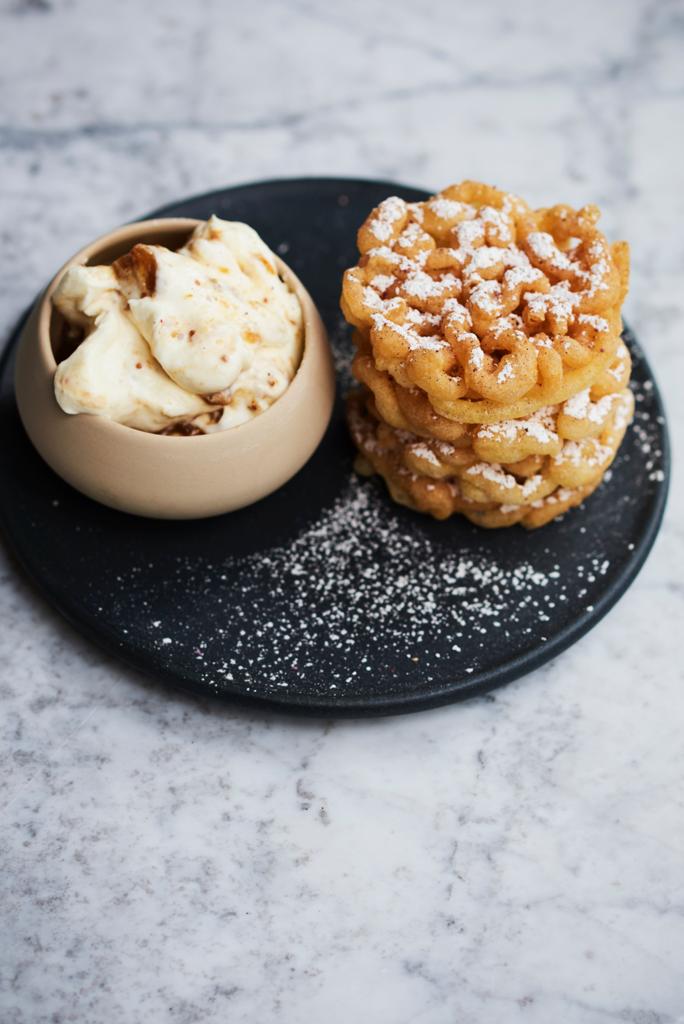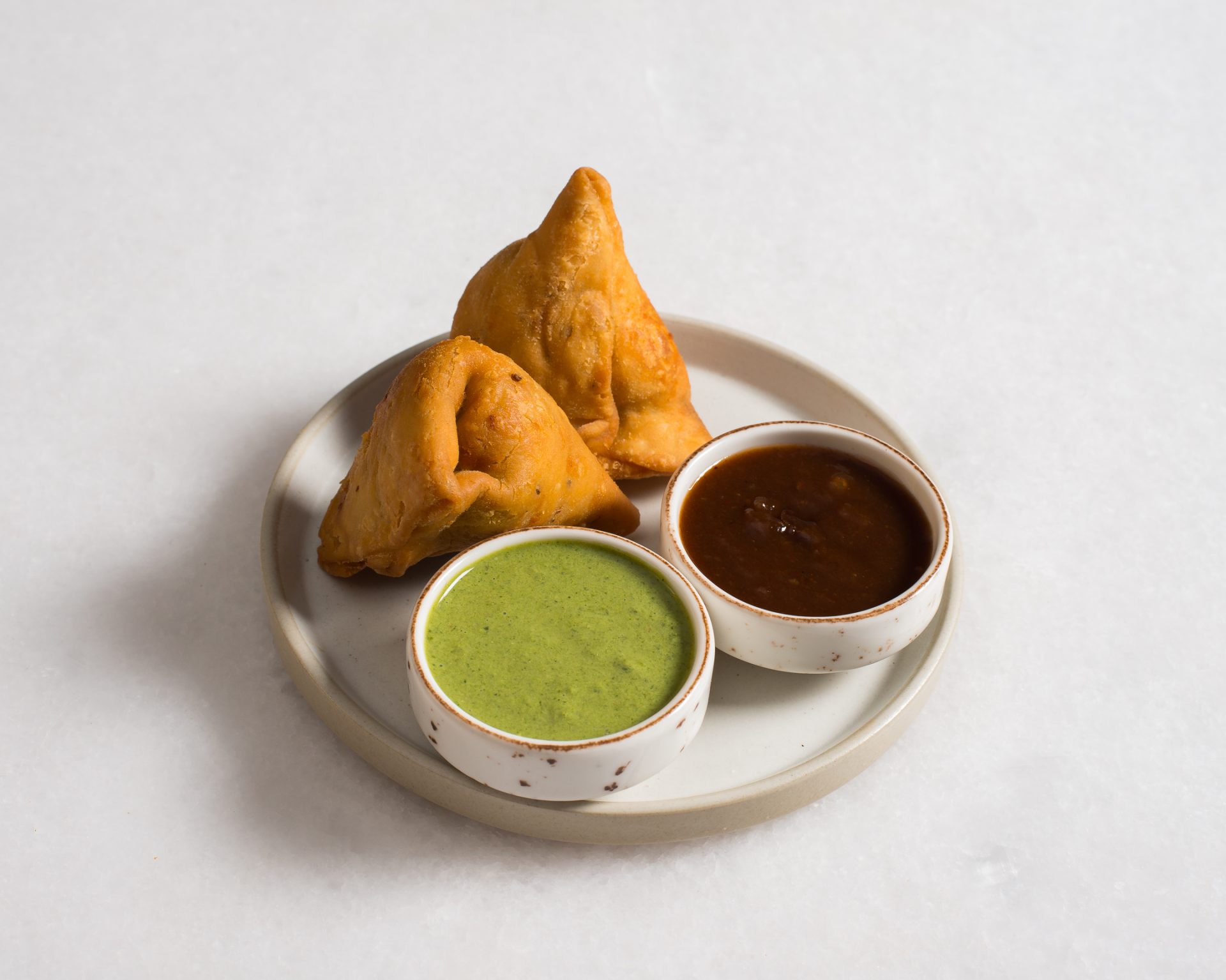3 Ramadan recipes from London chefs for a memorable iftar dinner

While the Muslim holy month of Ramadan calls for daylight fasting, food is also vitally important – and these signature dishes, courtesy of London chefs, are the perfect way to break each day’s fast.
This week, millions of Muslims around the world will begin observing Ramadan, a period of deep reflection, contemplation and celebration. As the Islamic calendar is based around the lunar cycle, the exact dates of the holy month change every year. But in the UK, Ramadan begins with the first sighting of the new crescent moon on 13 April, and ends with Eid al-Fitr on the evening of 12 May.
For the second year in succession, Ramadan is set to be a very different affair due to the restrictions of the pandemic. Nevertheless, traditions endure, and a sense of togetherness can still be found even while families are apart. Last year, Zeynab Mohamed recalled the unique experience of participating in a Zoom iftar during lockdown for Stylist. “Briefly looking up from my food, I was warmed by the laughter and the camaraderie,” she wrote. “I took comfort in knowing that we may not physically be in each other’s presence but we can be there virtually to carry on the traditions that bring us together.”
You may also like
“Now more than ever, Ramadan is giving me a chance to reflect on what’s important to me”
Ramadan is also a time of self-discipline, and the month-long, daily fast is just one way that worshippers can enhance their modesty, charity and spirituality. That being said, food has a very special place in Ramadan. During the holy month, Muslims have one meal (known as the suhoor) before dawn, and another (known as the iftar) after sunset. These meals are hearty, warming dishes that are just as much about encouraging connection with family and friends as they are nourishing the body after a day without food.
Whether you’re hosting a Ramadan get-together, need ideas for something special to take to an outdoor iftar dinner, or are simply interested in learning more about a new culinary culture, you’l find three delicious, restorative dishes below, courtesy of chefs at London food establishments. Ramadan Mubarak!
Seekh kebab
Avinash Shishandra, head chef at Mumbai-inspired restaurant Pali Hill says: “Ramadan is a sacred month for the Muslim community where they fast from sunrise to sunset. The food is usually nourishing and high in protein and vitamins to help them get through the day. Meats, nuts and dried fruits are an essential part of the diet during this period.
“To break fast in the evening, one such speciality in India is a classic beef seekh kebab which is made with minced beef infused with spices and herbs. It is cooked on a skewer over charcoal and served with breads or on its own with a salad and chutney. In Bangalore, the street markets come alive at this time of the month where Muslims breaking their fast flock for specialities and dishes only made during the month too.”
Serves 4
Ingredients
- 500g beef chuck + 125g beef fat OR 600g beef mince
- 2 cloves garlic
- 20g fresh ginger
- 50g coriander leaves
- 50g mint leaves
- 15g green chilli
- ½ tsp Kashmiri chilli powder
- 1 tsp salt
- 1 tsp garam masala
- 20g pine nuts
For the mint chutney:
- 1 bunch mint (picked and washed)
- 25g green chili
- ½ bunch coriander (picked and washed)
- 1 tsp salt
- 100ml lemon juice
- 100ml yoghurt
For the cucumber salad:
- 1 medium cucumber (cut into ribbons)
- 10g mint chutney
- 5g horseradish (optional)
Method
Put all ingredients for the beef seekh kebab through a mincer or a food processor twice. If you are using beef mince put it through the mincer once into a mixing bowl. Make sure the meat is not too lean or the kebab will be dry! Fat is important to keep it juicy.
Knead well so the spices and herbs are evenly distributed. Cover and rest in the fridge for an hour to chill and set. It makes it easier to handle when you press it on to a skewer.
Light up your charcoal barbecue or preheat the grill to high (240°C/220°C fan/Gas 8).
Divide the mixture into five to six equal size balls and wrap each one around a skewer, forming a kebab shape about 12-15cm long. Dip your hand in cold water to help get an even shape.
Once the barbecue or the grill is hot, cook the kebabs on all sides until evenly brown or medium rare.
Serve with the mint chutney, and shaved cucumber salad and grated fresh horseradish for extra zing.
For the mint chutney, blend all ingredients in a food processor to a smooth paste and store in the fridge until ready to serve.
For the cucumber salad, mix all ingredients, season with sea salt and serve.
Zulubia with yoghurt mousse, sour cherry and spiced rose sugar
Marwa Alkhalaf, chef patron at Iranian restaurant Nutshell says: “I am from Saudi [Arabia] and my husband is from Iran and both countries have communities where the month of Ramadan is observed. Food, understandably, plays such a central part of the month. [This recipe] celebrates the use of fruits, which are enjoyed to replenish sugars and are high in energy, as well as spices for the soothing qualities and yoghurt which is important to balance the gut.”
Ingredients
For the yoghurt mousse:
- 150g Greek yoghurt
- 100ml double cream
- 25g caster sugar
- 1-2 tbsp sour cherry jam or any jam you like
For the spiced sugar:
- 50g icing sugar
- 1 tsp cinnamon powder
- 1 tsp rose powder
For the zulubia batter:
- 125g plain flour
- 2 tbsp cornflour
- 3 tbsp Greek yoghurt
- 2 tsp dry yeast
- 235ml warm water
- pinch of saffron
- pinch of salt
- oil for frying
Method
Whisk your cream and sugar then fold in your yoghurt. Swirl the jam into your yoghurt mousse.
For the spiced sugar, mix all the ingredients together and set it aside.
For the zulubia batter, crush the saffron and infuse it in the water. Mix in your yeast and set it aside to activate. Add the yoghurt and mix it.
Mix your flour, corn flour and salt. Add your wet ingredients and mix properly. Your mix should be thick like a pancake batter, adjust the water and flour if needed.
Cover it and set it aside for half an hour.
Pour the mix into a squeezy bottle or a piping bag. if you are using a piping bag, use a ½ cm nozzle.
In a heavy bottom pan, pour oil until about 2.5cm deep and heat it to around 180°C. Pipe the batter into a 7.5cm swirl or a similar shape to a fennel cake.
Fry until golden then place on a rack to dry.
Sprinkle the zulubia with the spiced icing sugar and serve with the sweet yoghurt mousse on the side.
Punjabi samosa
Sameer Berry, general manager at Indian food delivery service Gaylord At Home, says: “A celebratory sizzle of frying a samosa will announce the soon arrival of breaking of fast. Fat and stuffed to the brim with spiced potato and peas, Punjabi samosas are filling and delicious after a long days fasting. Usually enjoyed by labourers working still at the time of the fast and purchased from street vendors to be eaten hot and steamy, with chutney.”
Ingredients
For the pastry:
- 250g plain flour
- 1 tsp carom seeds
- 1 tsp salt
- 50g ghee
- 50ml water
For the filling:
- 3 medium potatoes (boiled, peeled and crushed)
- 100g green peas (blanched)
- 1 small chopped onion
- 10g broken cashew nuts (optional)
- 2 green chillis, chopped
- 5g ground coriander seeds
- ½ tsp garam masala
- ½ tsp turmeric powder
- salt, to taste
- fresh coriander leaves (½ bunch)
- sunflower oil for frying, plus 2 tbsp for cooking
Method
For the pastry, mix all the dry ingredients in a bowl. Add the ghee and mix until you have a breadcrumb-like texture.
Pour cold water little at a time and knead it to a smooth dough. Do not overknead, or your pastry will become tough.
Rest for 2 hours at room temperature.
For the filling, sauté onions and green chilli in 2 tbsp oil and add turmeric. Then add the cashew nuts and fry until golden and add the remaining spices.
Mix the potatoes and blanched peas. Season with salt.
Mix well and finish with fresh chopped coriander and allow it to cool on a flat tray.
Divide the dough into 6-8 even pieces. Take each piece and gently roll in your palms first to smooth and soften.
Place it on a work surface and roll with a rolling pin, being mindful to keep the thickness even at 1mm and not too thin.
Cut the dough with a knife or a pastry cutter, right through the centre of the pastry to make crescent shapes.
Brush the edges with water to form a cone and carefully spoon and lightly pack the prepared potato and pea stuffing into the samosa cone. Make sure you do not over or underfill to prevent the samosa from bursting during the frying process.
Evenly press all of the edges, making sure there are no cracks in the dough. The edges should be sealed very well.
Heat the oil for deep frying in a kadai or pan. Test the oil by adding a small piece of dough – it should come up quickly if the oil is hot enough for frying.
Once the oil is hot, gently slide 3-4 samosas at a time and turn the heat down to a medium flame. Do not overcrowd the pan to ensure each samosa fries evenly.
Fry until each samosa is crisp and golden. The oil will stop sizzling once the samosas are done.
Remove and let them drain on to a kitchen cloth to cool slightly before serving with a strong cup of tea.
Images: courtesy of chefs
Source: Read Full Article

